The De Anza Motor Lodge
The Hidden Art of Route 66
In 1939, C.G. Wallace and S.D. Hambaugh took advantage of the automobile boom and built a motor lodge along busy Route 66 in Albuquerque, New Mexico. The motor lodge served as a cozy place for travellers to stay while driving through Albuquerque. Wallace developed a relationship with the Zuni Tribe through years of working on their reservation. After some time the De Anza Motor Lodge became a trading post that exposed travllers to indigenous art from the Zuni Tribe and gave opporunity for the Zuni tribe to gain a cash flow.
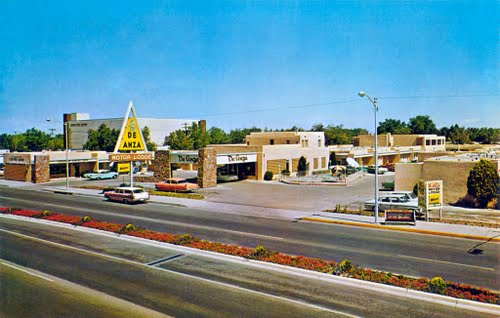
The De Anza Motor Lodge 1957 Postcard
The Architecture & Location
The Spanish and Pueblo inspired architecture played a large role in representing the vast culture Albuquerque had to offer. Adobe Pueblo style with arches and tight corners are shown in the structure of the De Anza.
The De Anza Motor Lodge Ariel
The main light brown colored buidling with white highlights and brick accents inspired by surrounding homes and houses on the reservation served as a marker for the De Anza. The building itself was different than the others that flooded Route 66 but its not the outside of the De Anza that became famous but the inside. Later on in the 1950’s, a coffee shop and gift shop were added to the motor lodge along with several other buildings. In 1957 a swimming pool was added to the two-point-five acre lot along Route 66. The original structure of the motor lodge was a two-story building and several one story building in a U-shape. The U-Shape structure alloswed customers to park right in front of their rooms creating a more convenient stay.After WWII, Wallace decided to plan an excavation for a basement. This basement would become the great canvas putting indigenous art, culture, the city of Albuquerque, and the De Anza on everyone’s map.
The incorporation of both Spanish and Pueblo inspiration made the De Anza Motor Lodge different than the surrounding motor lodges. The influence not only came from the culture of the state and city but of the art from the Zuni tribe. The surroudning area lacked the cultural influence that the De Anza had. Severing the De Anza from surrounding buidlings was the fact that it sat on it’s own property and did not share it with any other businesses other than the ones created by founder, Wallace, in an attempt to incorporate more into the motor lodge.
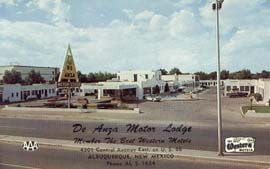
Postcard of The De Anza
De Anza Motor Lodge Today
In 2004, the De Anza Motor Lodge was placed on The National Register of Historic Places. Owned by the city of Albuquerque, several community based businesses and Route 66 restorators are working endlessly to revive and restore all that Route 66 was in a classic manner. The De Anza Motor Lodge plays a major role in restoring what Route 66 was by being a landmark for culture. Redesigning the motor lodge owuld begin to restore it’s rich hisotry and life. The De Anza Motor Lodge is currently under renovation to better serve it’s history.
The De Anza Motor Lodge sat encased by four streets, Central and Copper running East/West and Graceland and Washington running North/South. The rectangluar property allowed for easy remodleing and a convenient location to access from Route 66. The De Anza Motor Lodge sits on the same property that it was built on. The foundation in crumbles, the paint peeling, and the prpoperty guarded. Central, Route 66, ranges from a more modern to poverty stricken area. There ranges from thrift shops to modern shops to tents from homeless people. The motel sits within a mile of the University of New Mexico, which creates the surrounding neighborhood to be extremely diverse. Sitting next to it is a bank and on the other is shoe repair man store. Across from it lie a bar and a Thai resturant, a much different community than in it’s prime. Currently, Central is under construction to introduce a new modern public transort system called A.R.T. (Albuquerque Rapid Transit). 1
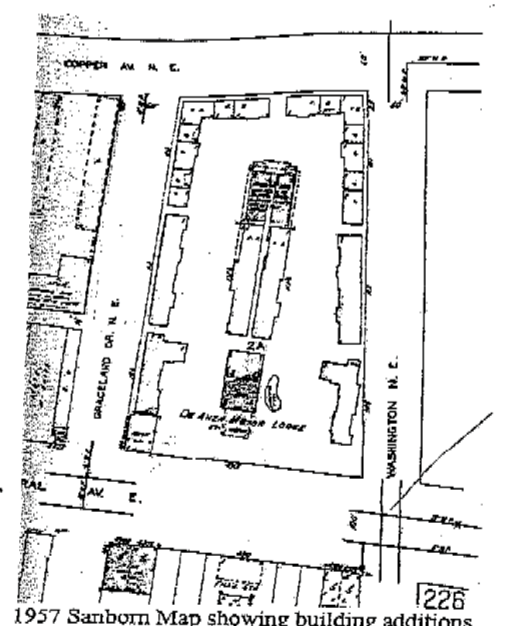
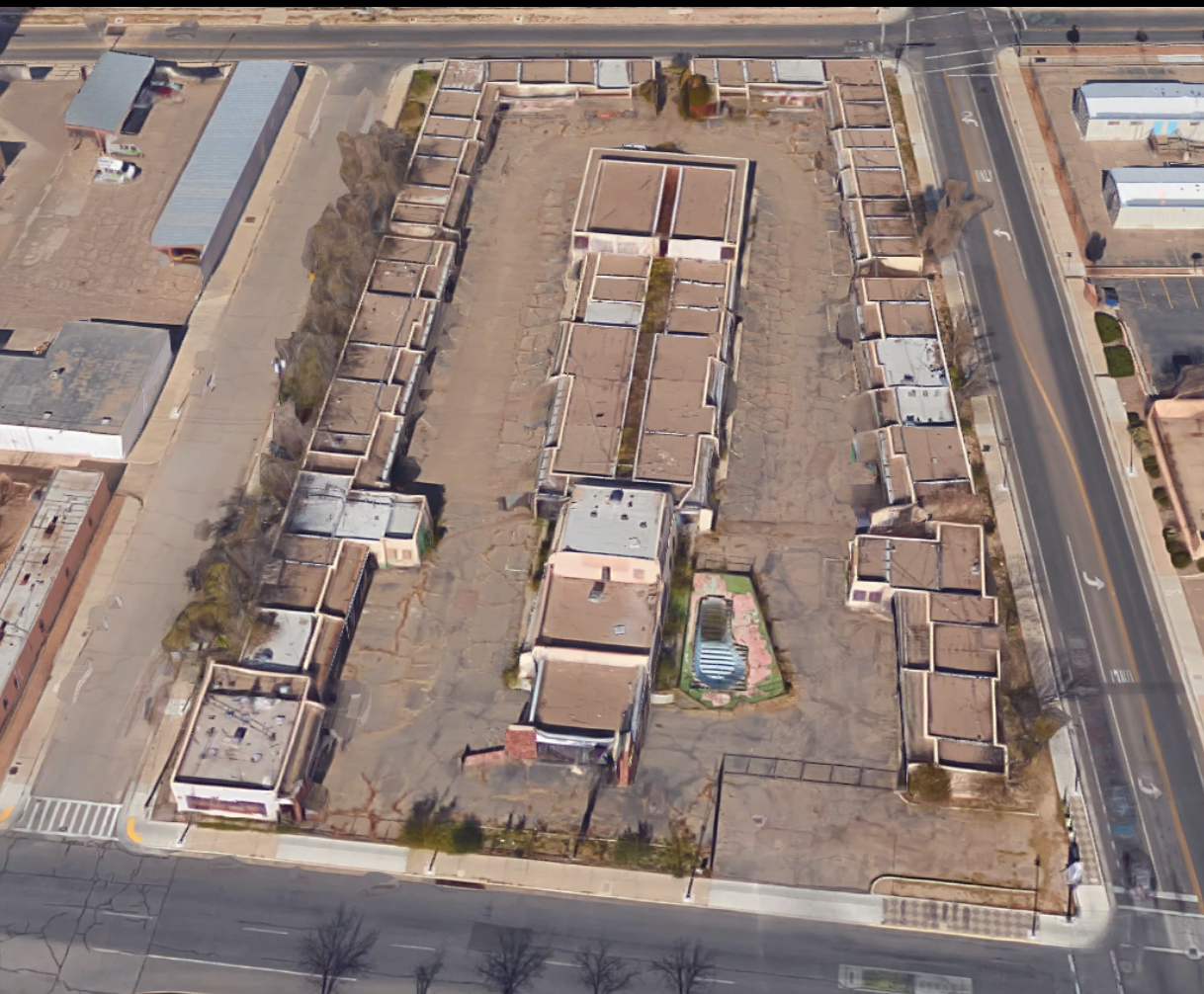
The images of above are of historic De Anza in the 50’s and today in 2017.
The Hidden Gem of the De Anza Motor Lodge
The motor lodge itself represented a work of art. Before building the motor lodge Wallace began to form a bond with the Zuni tribe. The relationship Wallace cerated with the Zuni tribe helped the motor lodge connect people from the Zuni tribe to travellers from all over the U.S.. The motor lodge soon became a trading post that displayed various types of art created by the people of the Zuni tribe.
Wallace asked an artist from the Zuni tribe, Anthony Edaakie Sr., to paint a mural at the lodge to represent the presence of Zuni culture at the motor lodge. He had created a mural in the basement of the conference room at the De Anza Motor lodge. The mural repsresents the Zuni’s winter shalako ceremony line. The mural follows east to west, symobolically. The leading procession Shulawitsi, meaning The Little Fire God, ending with the six Salimopia, meaning the gaurdians of the six cardnial directions of Zuni cosmology. The representative ideology of the Kachina’s of the Zuni tribe portray beauty, color, and form of Zuni ceremony. 2
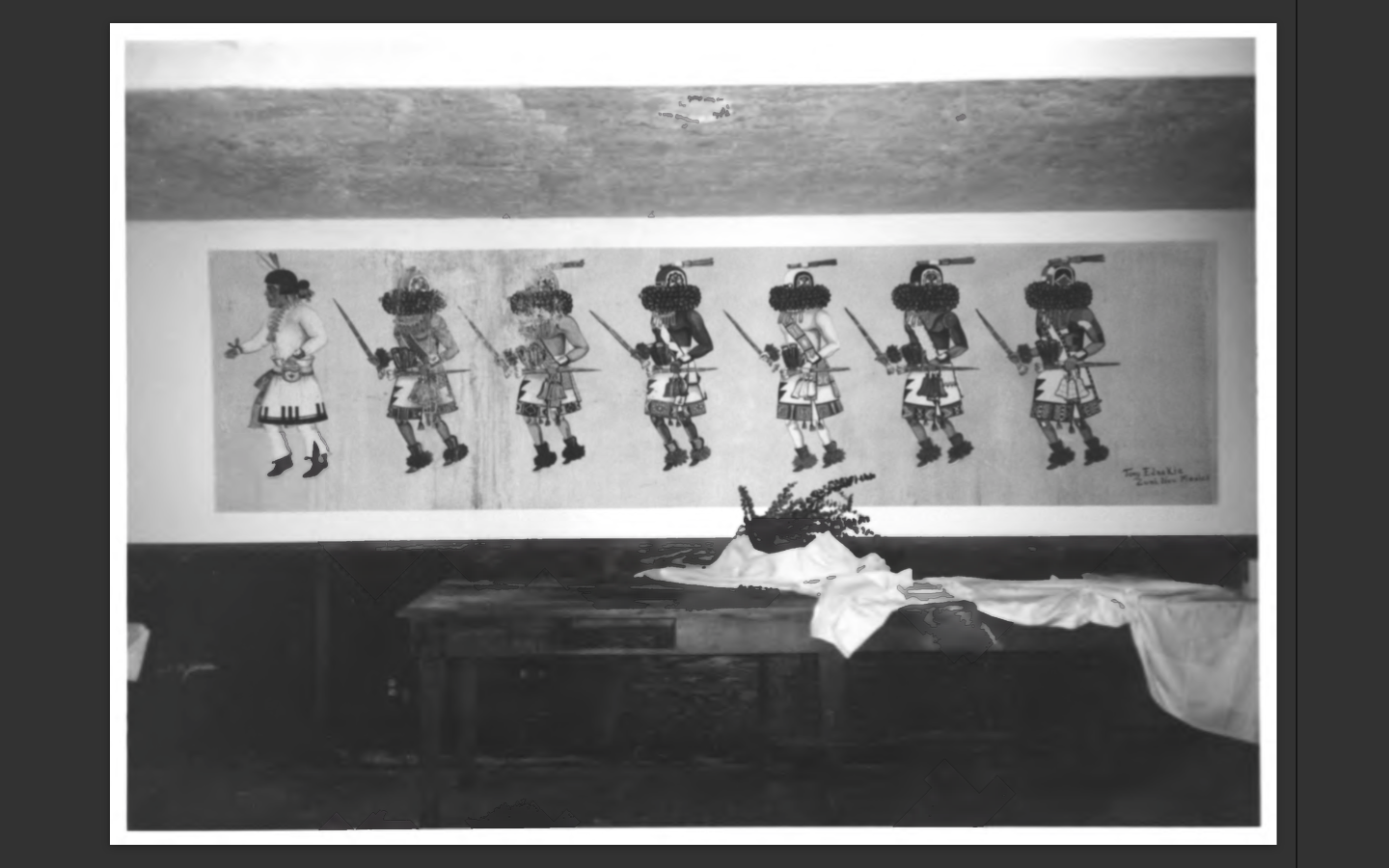
The hidden art in the basement of the De Anza Motor Lodge.
The Fate Of The De Anza Motor Lodge
After WWII in the late 1950’s, hotel chains began to pop up and eventually put local motor lodges out of business. The remodling and changes Wallace had made to the De Anza had allowed it to stay in business much longer than many other motor lodges. The motor lodge was listed as American Automobile Association-approved accomodation until the ealry 1990’s. C.G. Wallace died in 1993, shortly after the motor lodge was sold and continued this cycle until 2003 when it was purchased by the City of Albuquerque to save it from demolition. 3
The Art Left Behind
The art of the De Anza is hidden from the public, not on purpose but for the sole reeason of preserving the history of De Anza Motor Lodge. The history of the De Anza Motor Lodge lies in the art left behind. The art can be found in the basement of the main building or lobby. The culture of the Zuni people had been eteched into this building only for it to be hidden away. With the lack of ability to see this art how is the public supposed to be intrigued to save this piece of culture?
The public has to trust that the value of the mural out-weighs any other benefit. This exact thought represents the true meaning of a hidden gem. The De Anza can only speak through the mystery of the mural in the basement that the public hears of but may only see if entrusted to respect what it represents.
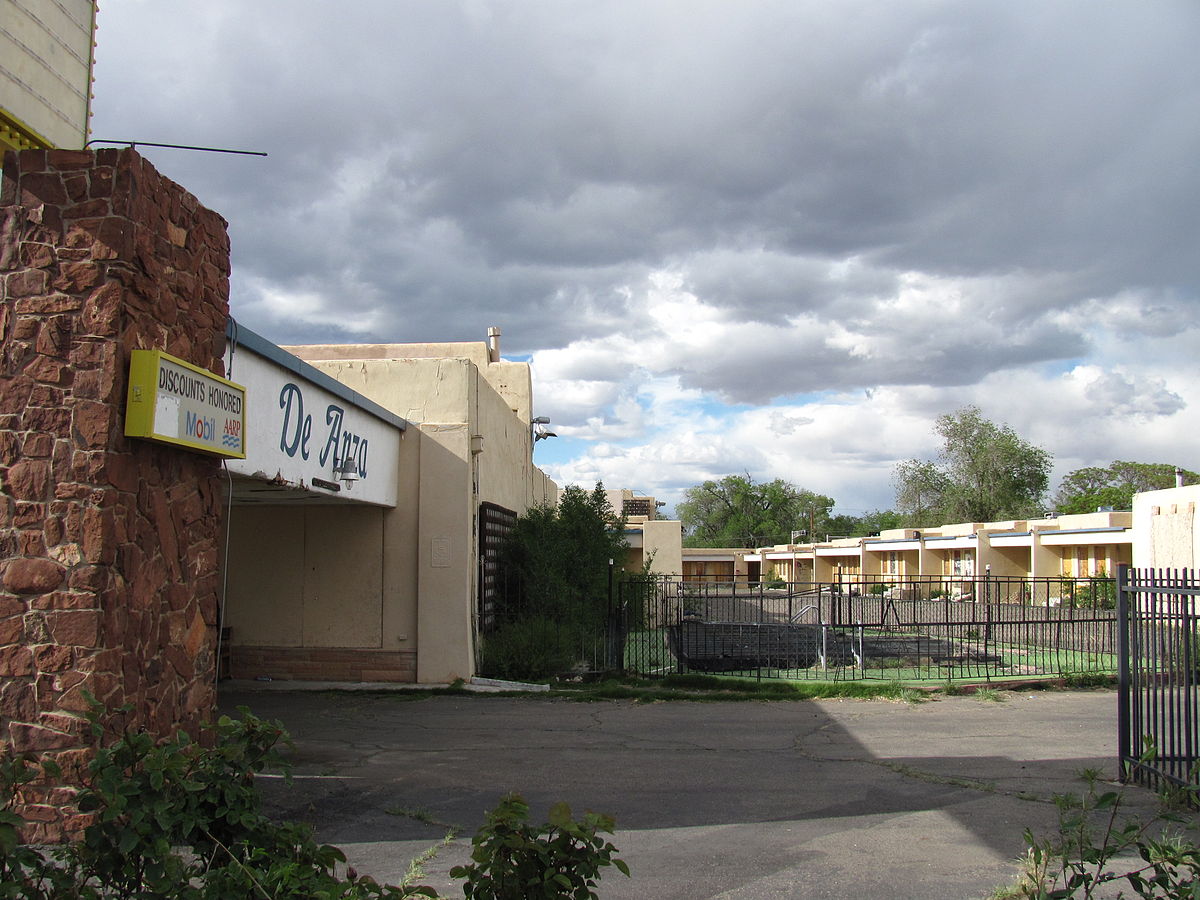
The motor lodge today
Footnotes
-
Albuquerque Rapid Transit” The City of Albuquerque and ABQ Ride, [n.d.] ↩
-
“National Register of Historic Places Digital Assets” National Park Services. April 30, 2004 ↩
-
“De Anza Motor Lodge Albuquerque” New Mexico National Park Service U.S. Department of the Interior, [n.d] ↩